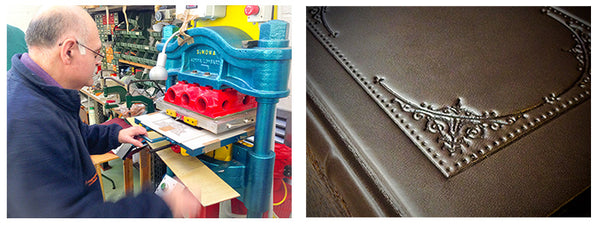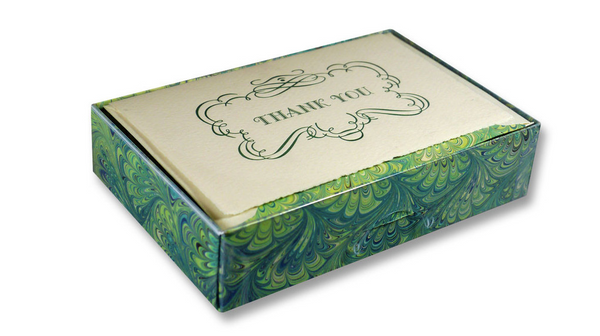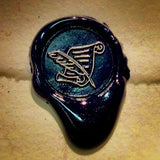The Scriptum Blog
Time to talk
Today is #timetotalk day; a great campaign encouraging us to talk about mental health issues without fear or stigma. My colleagues and I send our love and support to everyone who is struggling, and I'd like to share my own story. For my personal mental wellbeing, I find it really helpful to put pen to paper to remember the good things which happen every day. It doesn't have to be anything big: it could be kindness from a stranger, anything which suddenly makes me smile, even a particularly good cup of coffee. It's easy to get swamped in the negative things which happen in the world and in our own minds, so creating space in the day to write a simple, positive sentence calms and centres me, and helps me focus on good memories. This year I am going to write a line a day in a journal I have called 'The Good Place', and I hope that this idea might help other people too. So, take some time today to have a chat about the problems one in four of us face, and spread the word that it's #timetotalk!
The making of an Italian leather bound journal
In a quest for some exciting new lines for this spring, we decided it was time to pay a visit to one of our suppliers to see exactly how their leather bound journals are made. We like to know precisely where our stock comes from, as we want to be able to talk with confidence about every detail of a product’s journey: its materials, its history, its creation. Provenance is important; before becoming part of your story, a journal has a tale of its own.

Amarcord is an Italian bindery based in Piacenza, a beautiful cobbled and campanile-dotted town halfway between Milan and Bologna. The company’s name is a local dialect word for “I remember” in a rather nostalgic sense - very fitting for a maker of journals, the repositories of memories and dreams. We have been working with Amarcord for a number of years, and as well as many of our best-selling journals, they also supply some of our music manuscript journals, wine records and restaurant books, so we were rather excited to meet the craftsmen who make them.
Amarcord is run by third generation leathersmith Sergio, whose grandfather set up the company, originally to make leather luggage and belts, shortly after returning from the second world war. Sergio's father eventually took over the business, and then Sergio in his turn, building on the years of family experience in leatherwork to specialise in journals and binding. He works closely with his colleague Daniela, who is Piacenza born and bred, and passionate about not only Amarcord journals but all the produce and history of their region. When not hard at work in the workshop itself, Sergio and Daniela sit in their office at patchwork leather desks (made in-house, naturally) drinking fragrant espresso and arranging the distribution of their journals all around the world.

The workshop is a light, airy building a few miles from the city centre, filled with the heavy scent of leather, paper, and glue, and the clatter and whir of machines ticking over, waiting to be used by the small team of leatherworkers. With this artisan style of production, each journal comes under Sergio's watchful eye and allows him to ensure the quality of every piece is up to his standards.

The journal-making process begins with the leather. The leather for our Verona journals comes from the Veneto, where the cow hides are tanned, dyed, and greased to give their distinctive soft suede-like texture. The leather for our Trieste journals and Embossed Window journals with a smoother, shinier finish, comes from nearby Tuscany. Amarcord have dozens of other styles and colours of hides stacked in rolls along one wall of the workshop - it’s difficult to pass by without stroking each one to feel the grain and finish, and nigh on impossible for us to decide which we want to use for our order. After poking, prodding and a good deal of sniffing, we finally pick out our favourites to make up the journals which will arrive in Oxford in the spring.


Once we have selected the type of leather, it is taken it to the cutting press. Sergio chooses a sharp-edged press, exactly like an industrial-strength cookie-cutter, for whichever shape of cover he needs, and positions it carefully on top of the hide. The heavy stamp is brought down hydraulically, pushing the sharp edge of the press cleanly through the tough leather to leave the basic shape of the journal, and sometimes a double hole for a tie-closure. 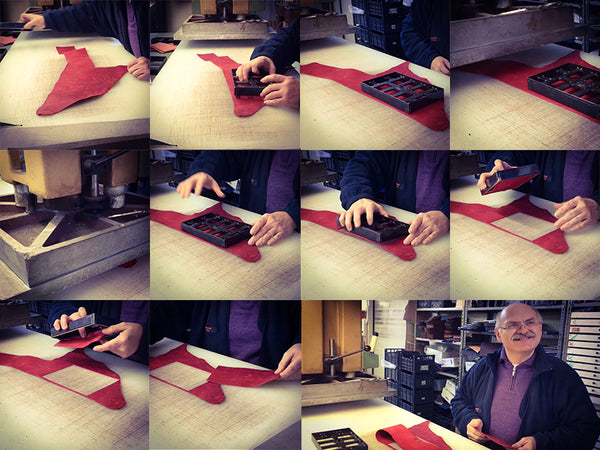
If it is a hardback, the leather now needs to be attached to a thick layer of mount board to give it stiffness and shape. For spines with the traditional ridges, a piece of ridged board is also added to give the leather its characteristic shape after a short stint in a curved spine press. Now comes the embossing. Metal blocking dies with a bewildering array of patterns are neatly filed in drawers, ready to stamp their pattern onto the leather. To do this, the die is positioned in a stamping machine which heats the metal to 125°C before bringing it down on the leather. The heat and the pressure stamp the pattern indelibly onto the leather’s surface. 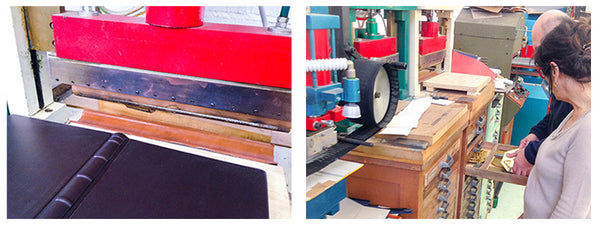

The next step is the block; a bound collection of pages to put inside the journal. Amarcord use Italian-made book blocks with 85gsm acid-free paper as standard (120gsm for sketch books). The leaves within the block are stitched together as well as glued at the spine, leaving the pages firmly and tightly bound even if the journal is opened completely flat or folded back on itself. Laura Berretti, an expert in traditional Italian marbling techniques, also sends Amarcord blocks with hand-marbled edges from her atelier in Florence. These are the blocks used in our Trieste journals. For books with handmade paper, luxurious deckle-edged Amatruda Amalfi paper is stitched together by hand in the workshop to create the block from scratch. 

If the block needs to be resized, or mount board cut, there are a pair of guillotines for the job. One is a modern machine, which you have to press two buttons about a metre apart to operate - the idea is that as you need two hands to bring the guillotine down, you can't accidentally chop off your own fingers by mistake! The other looks more like a medieval decapitation device than an innocent bindery tool; a manually operated, meter-long, razor-sharp blade which comes chopping down with a sinister swish to cleave easily though the thickest mount board.
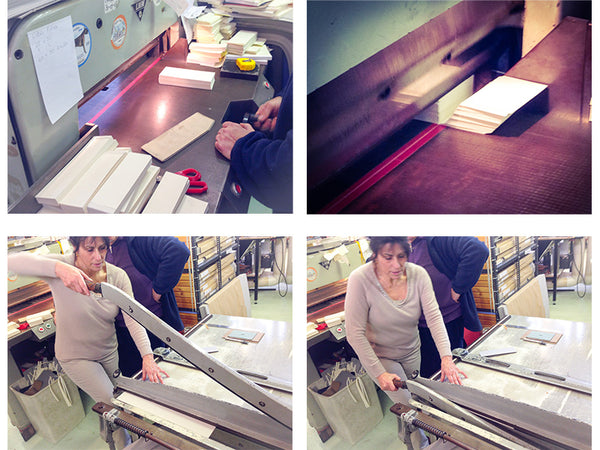
Once the block has been selected and trimmed to size, it is time to unite it with the cut-out and embossed leather. In a few quick, deft motions, the block is run through a revolving press, a bit like a mangle. This coats it with a fine layer of glue from the roller, which is fed from a bubbling pot of the treacly liquid. The block is snatched from the roller immediately, then aligned with and pressed onto the leather cover by hand, binding the two firmly and evenly together. It is then put in another press for five minutes while the glue dries. While the team at Amarcord make all this look easy, moving with the assurance and dexterity born of long practice, we Scriptonians kept our hands safely tucked in our pockets, imagining accidentally gluing our fingers to that inexorably revolving mangle.

If the journal has any extra features, such as a tie closure, this is the time to add them. A thin leather thong, stamped out of leather by the same process as the journal covers, is looped carefully through the holes; a fiddly process. Then a beechwood bead, sourced from Bergamo (just north of Milan) is threaded on to make a toggle closure, and the ends of the thong neatly tied and snipped. 
And finally, the journal is finished! Although we have been working with Amarcord for several years, it was inspiring and somehow humbling to see how much attention to detail, how many years of experience go into producing each and every journal handmade in their workshop. It all comes back to provenance: if you know where something comes from, you can be assured of not only its quality, but the tradition in which its making is rooted. It was fascinating to discover the story behind each part of our journals, and to meet the people whose passion for traditional leatherwork keep us journal-lovers supplied with the objects of our desire. We can’t wait for the new styles we have ordered to arrive!

Thank You Cards and the Dreaded Thank You Loop
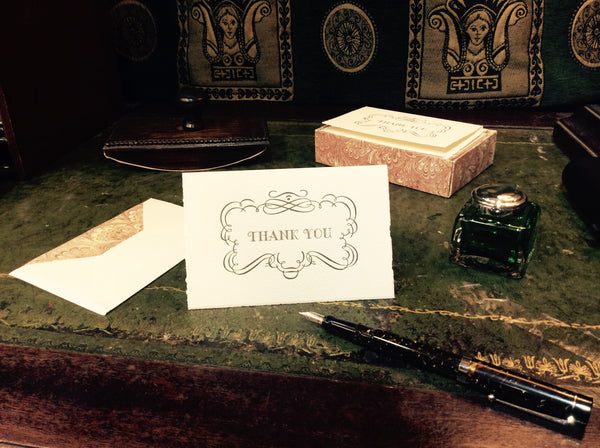
We all know that slightly flat feeling when you have spent time, money, and above all, effort on choosing a present which you know is utterly perfect for someone, but you haven't seen them open it. We've all been on the other side too - received a gift which has touched us ("I can't believe she remembered I wanted this!") but have had to restrain our visible enthusiasm lest Auntie Myrtle realise her Twix mug wasn't quite as thrilling as that incredible compass globe from cousin Althea. It's polite to write a thank you card for any present, but the really thoughtful ones truly deserve it. So, whether it's a dutiful note for a gesture gift or a heartfelt thank you for a long-desired treat, here are our four simple rules for the perfect thank you letter:
1. Be prompt. The acceptable length of the note is proportional to the time you've taken to send it. A couple of lines within a week of receiving a present is perfect, while if you leave it longer, you should really write at more length and detail to justify how long it has taken. And let's face it, the longer you leave it, the less likely you are to write it at all.
2. Be specific. Saying "thanks for the present" sounds like (and probably means) you can't quite remember exactly what they got you. Telling the giver how you have used/will use the item they got you is a nice way of letting them know you appreciate the qualities of the present.
3. Draft it. A two minute scribbled draft will help avoid repetition of fulsome adjectives ("lovely" sounds a bit disingenuous when it has been used three times in a row) and also prevent spelling mistakes and messy crossings out. It doesn't have to be a masterpiece of world literature, but coherence and elegance are always worth aiming for.
4. Handwrite it. Even though it puts my views at odds with the über arbiter of etiquette, Debretts, who suggest that an emailed thank-you is sometimes acceptable, to me they will always look like you are just filling a dull 5 minutes at work, and frankly aren't worth the cyberspace they're written on. A spontaneous text at the moment of unwrapping is all well and good, but the rarer it becomes to write by hand, the more appreciated proper handwritten thank you cards become.
Some examples...
The dutiful note with draft, written the day after receiving the present:

The sincerely grateful note, written after a week:

The "I don't care about your present or you" email:

A word of caution to end on - never write a thank you card for a thank you card. This kind of gratitude one-upmanship is not only in poor taste, but can lead to the dreaded thank you loop. If you have friends who are also stationery addicts, it is disturbingly easy to become trapped on a Möbius strip of thank you notes, thanking them for thanking you, and receiving thanks for your thanks of their thankfulness.
The dreaded thank you loop

Once entered, the thank you card loop can only end in bankruptcy, madness, or death (or more realistically, repetitive strain injury in your writing hand). Having said that, if you insist on engaging in competitive gratitude, you can break the loop by sending a thank you card so magnificent that no reply is possible... so get these ones, and follow the four thank you card rules. You'll win every time.
Letterpressed Thank You Card Set
Handwriting and expression: what we lose when we forgo the pen

An historian came into the shop this morning to look at our fountain pens, and we started talking. He explained that the reason he writes with a pen is to feel connected to the people whose lives he is examining. He studies the early modern period, and when he looks at documents written by hand, he can see if someone was writing in a rush, in a temper, with passion, or in a lazy relaxed scrawl. The way they write, just as much as what they write, influences his analysis of their meaning. After this conversation, my thoughts (as they often do) turned to handwriting.
It seems disingenuous to complain about this on a blog, but we lose so much when we move our hands from the pen to the keyboard; the reader can't ever see my deleted first choice when I replace a word, can't tell when I've sat for minutes on end searching for a more apt expression, can't see the flow of my thoughts as I shuffle these paragraphs round on the screen. But a pause in handwriting, while the writer sits and considers what to say next, is often subtly marked by a physical trace on the paper; a blot while the pen pauses at the end of the thought or a heavier hand when sad words come unwillingly. There are myriad traces of the writer's progress, from scoring through one choice of word to replace it with something more telling, to the rushed and jagged spurts of inspiration. Have you ever looked at poetry manuscripts? No matter how beautiful and well-chosen the words of the final piece, I find exploring the poet's scribblings and crossings out infinitely more fascinating.
In thoughts that have been typed, qualities such as nuance and irony have to be carefully built into the language itself to avoid being misinterpreted or even missed altogether. This careful consideration of the words we choose might have been a positive consequence of typing if it happened more: but think how often your dashed-off texts and emails are misconstrued by someone who can't gauge their tone, or how often you find yourself flicking to your emoji keyboard as a quick way of ensuring this doesn't happen. To be witty, I should insert a wry-faced emoticon here, but I simply can't bring myself to do it. Our language, or at least our capability of using it to communicate complex thoughts and emotions, becomes worryingly flat when we turn to the keyboard. Little effort is being made to distinguish between subtle gradations of meaning when all you choose is the size of the grin on your smiley.
While content is important, handwriting itself is also undeniably evocative. It is an artefact of time and effort, and this makes the handwritten message, whatever its content, more meaningful than the typed version. I've said it before in these blog posts and I will doubtless say it again; when you receive a handwritten note, your heart leaps in a way it will never do for an email. Leave aside all that 'handwriting experts' proclaim to know about your character from how you form your risers: for me, the simple thrill of recognition is enough. When I see an envelope addressed to me in back-slanted, looping, regular writing, I know immediately it is from my Gran. I read a page of handwritten directions a friend has written, directing me to his unSatNavable house, in a hand so firm and decisive the ink is always scored into the paper, and wish I was always so sure about what I was writing. I receive a thank-you note from an old housemate in his small, neat, almost childish printing, yet it still evokes long-ago messages on the fridge warning of dire consequences for anyone bold or foolish enough to eat his cheese.
Of course when you are late to meet a friend, nothing is better than a quick text to let them know where you are. Of course you won't have to manically pat down all your pockets hunting for your shopping list when it's safe on a smartphone app. Of course when you want a quick answer from a colleague you aren't going to send a masterpiece of calligraphy across the office via carrier pigeon. I don't want this to seem like an anti-technology rant; tear off my parchment mask and you'll find a true technophile underneath. But there is space in the world for the old and the new, for the functional and the beautiful. I wish that the people who come into our shop and say "lovely stuff, what a shame no one writes any more" would take five minutes off Facebook-stalking acquaintances to pick up a pen and dash off a postcard to a friend they hadn't seen in a while, and miss. That rather than "liking" someone's post about the birth of their baby, people would sit down and write to the parents, finding words not only to congratulate the new family but also to share their own experiences of suddenly finding a beloved son, god-daughter, nephew, or grandchild in their lives. Typing is convenient, functional, and necessary. Handwriting is sentimental, emotional, and human. We must not let it be lost.
Victorian nibs and other treasures

A double-headed nib and other beauties unearthed in the quadrennial spring clean of our nib box. A few of these nibs are modern, but we have some dating back to the Victorian era. Writing companies really knew how to advertise their wares back then; one of the oldest boxes of nibs proclaims "3007 newspapers recommend them" along with a charming little rhyme calling their nibs "a boon and a blessing to men"!
Of shoes and ships and sealing wax
If you were really expecting to read about shoes and ships (or cabbages and kings, for that matter) you will be sadly disappointed. This post is about the sole item above which falls into our immediate realm of expertise - sealing wax.
We sell a lot of it. Perhaps it's the novelty value, perhaps it's because there really is no better way to feel like an Austen heroine or a character from Dickens than actually sealing a letter. All the sealing paraphernalia looks wonderful on a desk, and while no-one actually needs to seal anything these days, the look on a friend's face when presented with a gloriously sealed invitation is enough motivation for even technophiles to try it.
A brief history of sealing wax
In the middle ages, when illiteracy was rife, wax seals were commonly used for things we would use a signature for today, such as authenticating a will or contract - the symbol or crest on your own individual seal guaranteed your identity and integrity, and your acknowledgement of the contents. Some medieval clergymen are reported to have plucked out their own beard hair and added it to the melted wax, to show that the seal was truly a part of them! 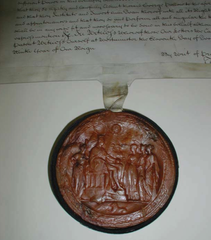
Back then, sealing wax itself had a very different makeup to the kind we use now (even discounting beard hair). It was made principally of beeswax and Venice turpentine, then coloured with various pigments, commonly vermilion or cinnabar to give a red colour. Seals were sometimes melted directly onto the document, but just as often hung off documents with ribbon or parchment tags, like the example on the right.

From the 13th century, as people became both more literate and more mobile, sealing wax began to be used less extensively for authentication and more for security and privacy. Letter-writing grew more common, and when paper was still an expensive luxury, people folded their letters so that the reverse side, held shut by a blob of sealing wax, formed the envelope. It was even perfectly normal to cram your writing onto every available blank space still showing on the outside of the letter - paper really was that expensive.
The wax itself now needed to be more brittle than it had been previously, so as to show clearly if someone had tampered with a letter. This meant the composition of the sealing wax had to change away from the malleable beeswax mixture used on medieval documents. From the 16th century, shellac, a reddish natural resin secreted by tiny insects in Thailand and India (see left) became known in Europe, and was speedily mixed with the Venice turpentine and pigment to make sealing wax instead of beeswax.
When some genius invented the gummed envelope in the 19th century, wax seals slipped away from the practical into the decorative - while still retaining their medieval function of proving identity. Although they are still sometimes used in the legal profession, modern seals tend to be either purely decorative or an expression of personality; you can tell a lot about someone by whether they choose a rearing stallion, a delicate butterfly or a elegant fleur-de-lys to represent themselves. Still, the addition of a wax seal to a hand-delivered card does always lend a certain elegance and dignity to the contents, whatever they may be.

Our wax
The wax we stock is made by the French stationery company J. Herbin. As nowadays people also tend to use wax more for aesthetic than practical purposes, we sell the traditional, brittle version of their sealing wax (you can find more details about its composition here, if all this talk of insects and beard hair has disturbed or intrigued you). We like this particular type of wax as it has a beautifully glossy finish, and gives a crystal clear impression of the seal image, so every tiny detail is rendered crisp and true. It is wonderful for decorative use on correspondence, certificates and wrapping, and almost anything else a creative mind can conceive. Scriptum's director used a beautiful custom-designed wax seal to decorate all sorts of things at his wedding, including making napkin rings from hand-marbled paper held together with a seal.
Wax sealing tips
Actually using sealing wax can be a tricky business if you've never tried it before. So, with all the usual caveats you would expect when giving advice for (quite literally) playing with fire - for heaven's sake, children, don't try this at home, and adults, proceed with care and caution and possibly even a small fire extinguisher - here are our handy hints for wax sealing.
- Place the envelope (or other item) you want to seal in the centre of your work surface. For more accurate results, you can draw lightly in pencil round the metal seal stamp where you would like the seal to go on the envelope. Have your wax and seal stamp to hand.
- Pour methylated spirits into the burner until it is a quarter full, and light it. Take the stick of wax, and holding it slightly to the side of the burner flame, melt it gently. Using the stick of wax as a pointer, direct the dripping wax to where you want the seal. You can use the end of the wax stick to stir the puddle of wax to shape it and get rid of air bubbles - this also helps the liquid wax to achieve a uniform consistency.
- Once the liquid wax covers about the area of a ten pence piece, and you are satisfied with the shape of your little puddle, calmly put the stick of wax aside on a non-stick surface (it will still be tacky from melting, don't put it directly on the table!) and put out the burner. The wax puddle is less likely to stick to the seal stamp when it has had a few seconds to become less liquid, so don't rush this bit. It also helps prevent sticking if at this stage you breathe lightly over the wax to create a barrier of moisture between the wax and the seal stamp.
- Check your seal stamp is the right way up, and press it firmly and decisively into the wax for a few seconds. Now leave the wax for a few minutes to harden completely, and your seal is done!
- For an even more beautiful effect, use a sponge to dab some gold or silver ink from an inking pad lightly over the seal to make the image stand out from the background.
- If you are doing multiple seals, allow the metal of the seal stamp to cool between each use, otherwise the wax will start sticking to it. But even if disaster strikes and the wax adheres to the seal rather than the paper, don't panic - a soaking in nail varnish remover will get the wax out of even the most fiddly cracks in a metal seal stamp's design.






- For a detailed history of all manner of stationery, consult the thoroughly informative Pen, Ink & Evidence by Joe Nickell (Oak Knoll Press, 2003).
- For a proper scholarly view of all aspects of sealing in Medieval times, see Good Impressions: Image and Authority in Medieval Seals, British Museum Research Publication 168.
- For an entymologist's-eye view of sealing wax, read the intriguing Fireflies, Honey & Silk by Gilbert Waldbauer (University of California Press, 2010).
In the workshop with Bomo Art in Budapest
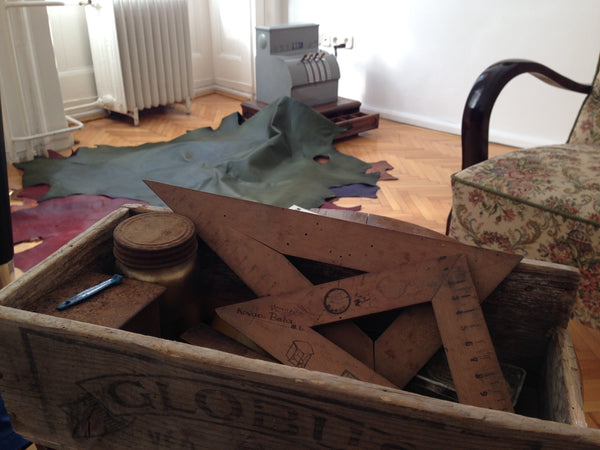








The Fountain Pen Resurgence
We hardly need to be reminded how much pleasure can be obtained from writing with a fountain pen, but nonetheless we’re very happy to read of their recent resurgence.
The BBC reports that many fountain pen stockists have seen sales increase this year - some up to double 2011’s figures for the same period. But this “is not part of a wider handwriting boom” - sales of ballpoint pens have remained stable. The fountain pen seems to hold a special place in our hearts, not simply for providing a superior writing experience to the ballpoint, but also because of its connection with tradition and its status as a beautiful object in its own right.
Stephen Bayley, writing in the Telegraph, thinks there’s “something touchingly humane about this resurgence. Given the choice, we prefer warm, wet smudginess to glacial perfection.”
In fact, the Telegraph has recently received a deluge of letters on the joys of fountain pens - providing even more reassurance that they’re here to stay (although some correspondents apparently still prefer to write with quills!).
And whilst every fountain pen devotee has his or her own brand of choice, at Scriptum we’d have to side with author Neil Gaiman, who tells the BBC that his current favourite is a Visconti.
Introducing... Bomo Art at Scriptum
We’ve been selling their products in our shop on The Turl for a little while and now we’re very pleased to be introducing a wide selection of Bomo Art stationery to our website.
Bomo Art are based in Budapest, where they design and make all their beautiful items - from the conception of their unique printed papers, to the handbinding of their journals.

A couple of weeks ago, in the midst of a Hungarian heatwave, we were lucky enough to have lunch with the business's founder at a leafy Budapest cafe and discover for ourselves the passion and workmanship that goes into everything the company produces. Bomo Art say they aim to entice us to write… with stationery this wonderful, how could one resist?

There are cards, photograph albums, address books, boxfiles and a handful of different journals to choose from. To see everything click here.
Scriptum in the Telegraph
Scriptum had a mention in Monday's Telegraph! Tim Walker very kindly describes us as one of the most gloriously idiosyncratic shops in the land.



